Did you know that a swimming pool pump…
- Accounts for 25% of your household’s energy bill
- Is the largest electricity consumer in your home
- Uses three times the energy of a refrigerator
- On average costs $427 per year to operate
Recently my wife and I built a swimming pool in our backyard and from a professional standpoint this was such a great learning experience. Building our pool allowed me to test out many of the pool products that I have recommended over the years. During this process I found there were products that I absolutely loved, but at the same time there were a few products that I have recommended on a daily basis that I would not recommend in the future again.
One of my favorite items connected to my pool is my Jandy variable speed pump. It is so quiet, gives me great flexibility with my water features and most important it is extremely energy efficient. During the time period that I was building our pool, I also started to participate quite a bit in a few online swimming pool forums and whenever the topic of pumps would arise I would be eager to suggest a variable speed pump. As I commented on this topic I noticed that there were a few who felt that variable speed pumps were not the best choice and in many cases would suggest a dual speed pump. So, I decided that I would dig a little deeper into this topic and I have shared my findings in this blog post.

The three types of pool pumps explained
First, let’s start with a basic overview of each of the three types of pool pumps on the market today.
Single Speed Pool Pumps (Cost $250-$500)
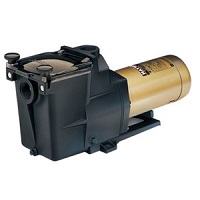
- Highest operational costs
- Least expensive upfront costs
- Operate at a single speed of 3450 revolutions per minute (RPM)
- Operate at a single horsepower ranging from ¾ HP to 3 HP
- Account for 75% of the pool pumps in the USA
Dual Speed Pool Pumps (Cost $500-$700)
- Lower operational cost that contributes to significant operational cost savings
- More expensive than Single Speed Pumps
- Operate at two speeds – 3450 RPM and 1725 RPM
- Operate at two different HPs
- Quiet at low speed
- Difficult to fine tune flow rates
- Additional controller or timer may be needed
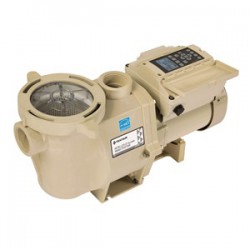
Variable Speed Pool Pumps (Cost $650-$1,200)
- Least expensive pump to operate
- Most expensive upfront costs
- Operate at full range of speeds from 600 RPM – 3450 RPM
- Operate at full range of HPs
- Easy to fine tune flow rates
- Extremely quiet
So why the debate?
The main point of the debate is if you should pay the extra upfront dollars for a pump to reap the rewards of lower operational costs in the future and subsequently how much more should you spend. Should you spend a little bit more on a dual speed pump for pretty good energy savings or should you pay more for a variable speed pump for even greater energy savings and the ability to fine-tune your flow rates?

Why do dual speed and variable speed pumps cost less to operate?
Typically single-speed pumps are too big for your pool. Dual speed and variable speed pumps address this wasted energy as they can operate at different speeds. Running your pump at lower speeds for longer periods of time will cost you much less in operational costs than running your pump at a high speed for shorter periods of time. The energy savings that are gained by replacing a single speed pump with either a dual speed or variable speed pump are based on an engineering principle known as the Pump Affinity Law. Without taking you back to high school algebra class, this principle states that the energy savings are disproportionately larger as you lower the speed of your pump. For example, if you reduce the RPMs of your pump by 50% you don’t get a 50% energy savings you actually get a 75% energy savings and lowering your RPM by 66% gives you an 89% energy savings.
For example if you reduce the RPMs of your pump by 50% you don’t get a 50% energy savings you actually get a 75% energy savings and lowering your RPM by 66% gives you an 89% energy savings.
Is your electricity expensive?
Electricity costs vary widely from state to state and this plays a big factor in determining which pump to choose. You pay for your electricity by the kilowatt-hour (kWh) and the pricing you pay per kilowatt-hour varies greatly from state to state. Dual speed and variable speed pumps use far less kWh than traditional single speed pumps with variable speed pumps using the lowest amount of kWh. If you do not know how much you pay for electricity then this website, The Cost of Electricity for All 50 States, shows you how much you pay. Below I have listed a few of the more popular states and if they fall into the expensive electricity, average electricity or inexpensive electricity categories. Currently, at the time of writing this blog post, the national average in the United States is 12.29 kWh.
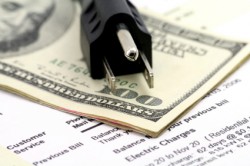
Expensive electricity (.30 – .17 kWh) – Traditionally the most expensive areas in the United States for electricity are California, Hawaii, Alaska (a huge pool state), New York and the Northeast.
Average electricity (.11 – .16 kWh) – Florida, Michigan, Ohio, Arizona, and Texas.
Inexpensive electricity (.08 – .10 kWh) – Tennessee, Oklahoma, Louisiana, Kentucky, Mississippi, and West Virginia.
Do you run your pump all year round?
If you live in a warm climate then you will see the potential for greater energy savings than those in cooler climates. This occurs because pool owners in warm climates run their pumps 365 days per year and those in cooler climates shut down their pool pumps for a good percentage of the year. On average pool owners in cooler climates run their pumps 122 days per year. If you run your pool pump 365 days per year in a warm climate then this would be equivalent to three pool seasons in a cooler climate!
Let’s look at the #s
The proof is in the #s so let’s dig into the #s a little deeper. Below I am going to run through a few examples showing the operational costs for a single speed, dual speed, and variable speed pump. Hopefully, this will illustrate how much of an impact electricity cost and climate come into play when determining your pump.
If we take the average size pool of 22,000 gallons and use the guidelines of turning your pool over once per day we come up with the following #s.
Warm Climates
| Pump Type | Energy Use Per Year | Cost to Operate | Savings Per Year | Average Pay Back Time |
|---|---|---|---|---|
| Single Speed Pump | 4714 kWh | $613 | ||
| Dual Speed Pump | 2521 kWh | $327 | $373 | 6 Months |
| Variable Speed Pump | 948 kWh | $123 | $640 | 15 Months |
Note: Example above is using National Avg. for electricity of 12.29 kWh if you live in a state with expensive electricity like California then your savings will be far greater. Calculate exactly how much your pool pump will cost to operate in your state.
Cool Climates
| Pump Type | Energy Use Per Year | Cost to Operate | Savings Per Year | Average Pay Back Time |
|---|---|---|---|---|
| Single Speed Pump | 2723 kWh | $354 | ||
| Dual Speed Pump | 843 kWh | $109 | $244 | 12 Months |
| Variable Speed Pump | 317 kWh | $41 | $312 | 24 Months |
Note: Example above is using National Avg. for electricity of 12.29 kWh if you live in a state with expensive electricity like New York then your savings will be far greater. Calculate exactly how much your pool pump will cost to operate in your state.
Pump payback time
The two biggest factors that determine how fast a dual speed or variable speed pump will pay itself back are:
- Climate
- Cost of energy
In warm climates, you will run your pump 365 days a year meaning you have more opportunity for energy savings. In areas where energy is expensive, the payback will also be quicker.
Just tell me what to get
If your pocketbook can take the additional upfront cost of a dual speed or variable speed pump then I would always suggest one of these pumps as the payback on average takes six months on a dual speed pump and 15 months on a variable speed pump.
In general, my suggestion would be based on if you live in a warm climate or cool climate and secondly if you have expensive energy costs or cheap energy costs.
Warm climate & expensive energy – Variable speed pump
Warm climate & cheap energy – Dual speed pump
Cool climate & expensive energy – Variable speed pump
Cool climate & cheap energy – Dual speed pump

Other Considerations
There are quite a few other considerations apart from the cost of operation that you will want to consider to help you determine if a dual speed or variable speed pump is right for you. Below is a list of these considerations.
Power company rebates
Power companies are offering rebates as high as $400 for switching over to a variable speed pump. In many cases, the power company rebate can make a variable speed pump cost less than a dual speed pump. Make sure to check if your power company offers a Variable Speed Pump Rebate. If so, then it may be a no brainer to opt for a variable speed pump.
Ability to control flow
If you have a lot of bells and whistles connected to your pool like waterfalls, a spa, water features, etc. then I would suggest a variable speed pump as it will allow you to control your water flow for each feature.
Pipe size
Keep in mind your pipe size when selecting your pump as the diameter of your pipe will affect which HP pump you can use. Smaller pipe sizes may not be able to handle large HP pumps. Here is a guide showing the GPM ratings for the most common pool pipe sizes.
| Pipe Size | Flow Rating (GPM) |
|---|---|
| 1-1/12" | 60 GPM |
| 2" | 100 GPM |
| 2-1/2" | 140 GPM |
| 3" | 225 GPM |
This means that if you went with a 3 HP variable speed pump that can output 150 GPM and you only have 1-½” pipe which has a max flow rating of 60 GPMs then the majority of the higher speeds of the pump will go unused as the plumbing is unable to handle this high flow of water.
Additional controller or timer
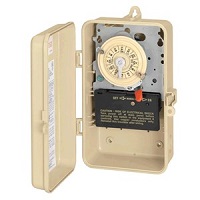
A consideration when looking at dual speed pumps is that in most cases you will need to purchase a separate dual speed timer. The price of this timer ranges between $140-$200 based on your current set up. If your pump is turned on and off by a standard yellow dial timer then you would go the $140 route which is a second timer which controls the switching between high and low speeds where your original timer would be for turning the power on and off to the pump. If you don’t have a timer for your pool or your project is the construction of a new pool then you would need a two clock timer which is the $200 timer. In most cases, for pools with automated control systems, an additional timer is not needed. There are a few systems like the Jandy Aqualink which require a special dual speed relay.
Motor replacement or pump replacement
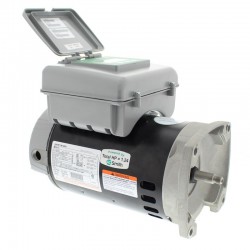
Often there is no need to replace your entire pump and you can save a considerable amount of money by just upgrading your motor to a variable or dual speed motor. So should you replace your entire pump or just your motor? A few questions to ask are:
- How old is your pump?
- Are there visible signs of damage to your pump housing?
- Are parts available for your pump?
In the case of the dual speed pump and motors, it often makes sense to upgrade your motor to a dual speed motor. The reason being is there is a great new motor on the market that has a digital timer mounted directly on the motor meaning that you don’t need to purchase the separate $100-$200 timers indicated above. For some reason unknown to me this digital timer option is only available on replacement motors and not an option on new pumps. Hayward, Pentair, and Zodiac, if you’re listening to this is your next big product and I will only ask for 20% of the revenue…
Pool size (High Stakes Poker)
Typically the larger the pool size the larger the pump which means the operational cost is going to be higher than a smaller pump. So with larger operational costs comes larger operational savings tipping the scales in favor of a variable speed pump on large pools.
Water Features
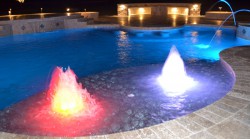
As mentioned earlier one of the key benefits to a variable speed pump apart from operational savings is the ability to control the flow of the pump. This feature comes in very handy if you have water features connected to your pool.
Do you like gadgets?
Many of us like the latest and greatest items on the market. I typically fall into this category. If you wait hours in line for the newest iPhone then you may be a prime candidate for a variable speed pump as they are pretty cool. It is neat to be able to dial your pump into the exact RPM needed and hear the pump ramp up or dial down.
Quiet
If your neighbors are complaining about your pump’s noise then a variable speed may be the way to go. Variable speed pumps are quiet because the motor is Totally Enclosed Fan Cooled (TEFC) meaning that it is much quieter than a single speed or dual speed pump. Often when I have had my pump on at very low RPMs I have to double-check that it is actually on.
In Summary
Your pool pump is most likely the most expensive energy consumer in your house so it makes sense to explore options on how you can minimize this expense. In almost all cases I believe that it makes sense to go with a dual speed or variable speed pool pump over a single speed pump. When choosing between a variable speed pump and a dual speed pump the two most important factors to consider are the cost of your electricity and how often do you use your pool.
Comment below with details about your swimming pool and details about where you live and we will help you determine which pump type is best for you.

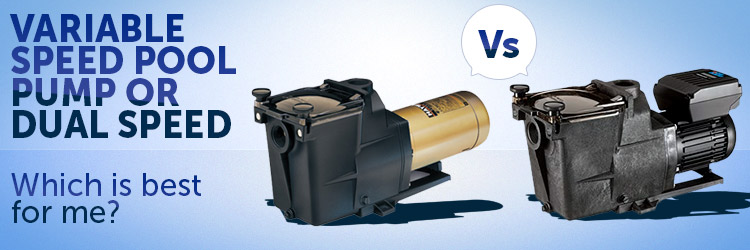
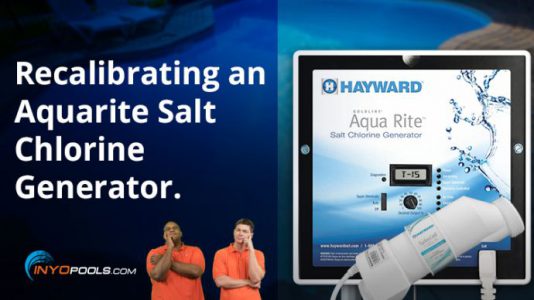
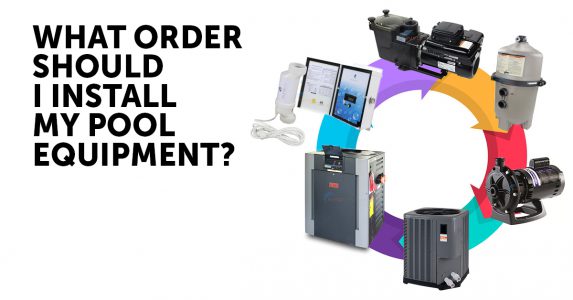
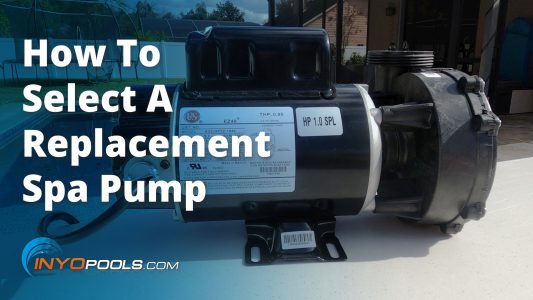
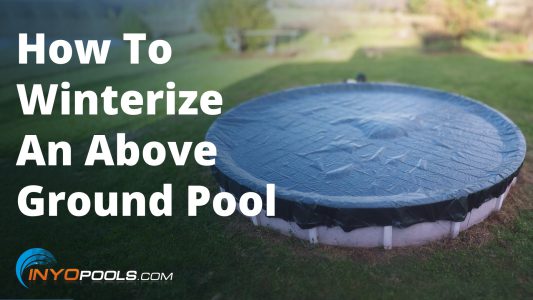






Mathew,
Thanks for responding.
Here is the info you are looking for:
The pool has a 54″ wall and with a 7′ deep end. I needed to have a custom liner built from Latham. There is a 12′-6″ shallow end before it starts to transition to the deep end with 4′ slop. then a 11′ flat on the bottom and a
3′-6″ slope to a 2′ ledge. The pump will be below the waterline. The pool will usually be getting used for about 3-1/2 to 4 months of the year depending on weather. I am not set on a variable speed pump either, just something that makes sense and is somewhat quite. I am also not dead set on the SD80 filter. I was also recommended a Hayward S270T2 filter with a 1-1/2hp Whisperflo. I am not sure what brad of filter is better. Some say Hayward is built stronger. Are the internal mechanism the same for either? I am planning to use Dr. Dryden’s active media for the sand filter. As for the pump, I am not fixed on a Pentair either. I am just looking for something that is well built to last, quiet and will work for my pool.
A side note: When I was figuring the head I did NOT include any of the return lines. Since I have one by the pump and one on the other side of the pool there would be approx. of 30 feet of 2″ return lines. If a in ground pump is being used maybe head is not as much of an issue.
I appreciate your help with this.
Feet of head really will not come into play because the pump is below the waterline. The pump will have a constant source of water barring your skimmer is clogged. I would stick with the above ground pool pump style. A dual speed should do the job for you.
Besides the pump being below the waterline, the cost of a variable speed would take longer to recoup with your short season and low cost of a replacement above ground pool pump. If you still decide to go that route, I would think about the PureLine Prime Variable Speed Pool Pump 1.65 HP – PL2605
Mathew,
I will look into the Pureline VS and also check out the Dual speed style.
Thanks for your assistance with this.
Pool info:
I live in Michigan near Brighton
I have a 33′ round above ground pool built into the hillside. With all calculations it comes to 31,600gal
My piping from the two bottom drains is 1-1/2″ coming out then turning into 2″ piping. 2″ piping from skimmer, 2″ piping for (2)1″ eyeball returns. Rough head calcs are 40′ before pump not including fitting or valves. I am looking to purchase a new pump and filter. I am looking at the Pentair SD80 sand filter and trying to figure out a pump. Can a variable speed pump work for this? some are saying the Pentair superflo VS. Or do I need to stick with a above ground pool pump? I would like to get something that is efficient and makes sense. Your feedback would be greatly appreciated. Last fall my pump died and realized after much research that the filter was way undersized for that much water. If there is any other info you may need, let me know. Thanks for your feedback.
A couple of questions first. How deep is your pool? I did a pool volume calculator and the results were 25k-28k gallons. I used the usual above ground pool depths of 4 to 4.5 feet.
Also, is your pump above or below the waterline? This will determine if your pump will need to pull the water to itself or if it will be gravity-fed.d
We have a 25,000 gal pool and live in Kansas. We currently have a single speed and are looking to upgrade to a variable speed. I believe the pipes are 1.5”. Any suggestions on Pentair Intelliflo vs the Superflo?
To give a better answer, I need more info.
What is the HP of your current pump? How long are the current run times? How big is your filter?
The current pump is a Pentair Superflo high performance pump, with a replacement generic motor, which is presumed to be 1-1.5 HP. We have a Hayward high rate sand filter, which holds 250lbs of sand. The maximum working pressure is 50 psi. It has a filtration rate of 20 gal/min. All of our PVC pipe is 1.5”. Last season, we ran our pump nonstop 24/7 from May til September. Last year was the first time using the pool since we bought the house the previous Winter, so we are newbies at this. Thanks for all of your assistance!
Andrea
Because your system already has the SuperFlo and has only 1.5″ piping, I would go with the SuperFlo VS 1-1/2 HP. Since I don’t know your actual feet of head, so I’ll just guess at an average feet of head rating of 30-45. That means you could turn over your pool water once in 14 hours a 2000-2500 RPMs. If you install a variable speed, the first couple of week will involve the process of dialing in, when speed and run schedule works best for your pool.
For your current single speed, you do not need to run your pool pump 24/7. Most pools only need their water turned over once a day to keep it clean. It may need more depending on bather load.
Hi… I have a new 12,300 gallon pool installed in Florida with Variable speed Jandy pump. After initial 3 day startup the pool company recommends 12 hrs/day at 3200 RPM. Still seems like too long and too high to me but I’m new to all of this. I’m trying to research to figure out what RPM/run time I will need. One guy said he would never run it at lower then 2800-3000 RPM’s once we figure out how the pool will take after the first 30 days. Doesn’t make sense to me why I would even have all these lower RPM options then. Any advice at all for a newbie?
Models Description
VSFHP165JEP VS FLOPRO VARIABLE-SPEED PUMP 1.65 THP, WITH JEP-R CONTROLLER
Using RPMs is an imperfect way of throttling waterflow because feet of head measurements can vary vastly from pool to pool, even if they are the same size. Click the link for an explainer of feet of head. For example, 3200RPM on pool ‘A’ may pull 50 gallons a minute (GPM) but Pool ‘B’ with a shorter feet of head can pull 65 GPM on 2500 RPM.
I’ll presume your installer did not provide a feet of head measurement for reference you will have to dial it in with some trial and error. This is an excerpt fromn a different reply I had on this process:
Even though it is Florida, and is still relatively warm down here, you should wait until temps start hitting 80 to start nailing down pump schedules. There is not enough heat or rain to give you an honest assessment about the schedules you will ned in May.
I need to replace my single speed pump. My repair guy says he can replace my single pump with a variable speed pump, but my control panel doesn’t support a variable speed pump. It is an older panel, but fairly sophisticated in that it supports the pool, spa, and heater. Does this sound correct?
It would help if you gave a model number or make and model of the panel.
And variable speed motors have the mounted control, so most pool owners should be able to set the run times and speed then let it handles its work unfiddled with.
Hi Matthew
Great thread! I have an older 30+ yrs filter system, American KDI. I was told if I were to change to a new variable pump I would have to do all new plumbing and filter system. Is this true? It seems from this thread you believe that I can just replace the pump or the just the motor and get a good result.
You shouldn’t have to replace the filter system and piping to put in a new pump. Variable speed pumps can be installed for almost any application. The VS’s slide scale for water flow allows it to be adapted to a wide range of system requirements.
You may be able to only replace the motor, but that depends on the model of pump. I am not sure which American Products pump is in a KDI package.
I am considering a variable pump. I have 1 1/2 pipes but I have a 2hp pump and had to change the connecting pipes to 2 in to mate with the 2hp pump and motor. If I go to a variable should I go back to a 1 1/2 HP pump? From what I have read here the 2hp motor can’t get enough water because the underground piping is not able to supply it. I live in southern California and the size of the pool is about 18,000 gallons. It sounds like it would be more efficient to change the above ground pipes back to 1 1/2 in. And purchase a 1 1/2 variable speed pump. Right?
To play it on the safe side, I would go with the 1.5 HP. An 18k gallon pool is well within the range of a 1.5 HP pool pump like the Pureline Prime, IntelliFlo, or Badu EcoM3V
I live in the DFW area of TX and have fairly inexpensive electricity rates – currently about $.07 kwh. I have a single speed pump that only runs water through the DE filter and gas heater (which is used to extend the season), no waterfalls, fountains, etc . The Polaris Pool Sweep has its own booster pump which runs less time than the main pump depending on its need and the time of the year.
Is a variable or dual speed worth me considering now or when I need to replace my pump?
Ok, but what is the size of your pool? What is the model number of your pump; and/or how long does your current pump run in a day? What is the size of your filter?
Can you please update the article to explain exactly how the variable speed motor saves money?
For example: If I have a pool with a bottom cleaner connected to the skimmer, and a solar heater on the roof, a certain amount of pump speed/suction/pressure is required to 1) push the water to the roof, and 2) provide sufficient suction to make the bottom cleaner operate. The way I see it, my pool requires a certain fixed speed for everything to work properly. Why then would I need a pump that changes speeds? Do I have to program a VS motor to the speed that is best for my equipment? If so, if that needed speed is the same, or similar to, a fixed speed motor, then why bother paying more for a VS option if there is no energy savings? How is one to know?
I would like to replace my 2 HP Jandy pump with a Pentair VS pump. My two main considerations are a caretaker cleaning system which requires 14- 20 psi in order to work properly and a Pentair SWG. Will I be able to run the VS pump at low enough rpm to see any actual savings over the single speed pump?
Hi
I have to replace my pool pump and want to know if I should get a variable speed pump. I have a rectangular 20,000 gallon pool with two return lines and no water features. It is hooked up to a solar panels on the roof. I live in Southern Californa.
Because you are in Southern California your local utility company may offer rebates that offset the cost of a variable speed compared a single speed. Contact your utility company or refer to their website for info on variable speed pool pump rebates.
Hi Matthew
I wanted to clarify- Is it better to go with a variable speed pump over a single speed? Take into account I don’t have any water features. I have solar heating. It is a rectangular 40×20 pool. What would you recomend?
We need to replace our pump and I have talked to two pool repair companies. Both suggest a variable speed pump-which I am not opposed to as they say it is very energy efficient. Our pool is 16 years old, appx. 20,000 gallons and has a sheer descent waterfall. We also have solar panels. We live in No. California where it’s hot and we run it from April to October.
One vendor is suggesting a Pentair SolarTouch controller and the other vendor is saying that is not going to be energy efficient and suggesting an “EasyTouch with screen”…which is estimated at $1500 compared to the estimate I received for the SolarTouch of $400….What is the difference between the two? I’m not sure what i need.
Great easy-to-read and informative article. Thank you P.P. and INYO
Hi there,
My pool has two single speed Whisperflo 2hp motors (1 pump for filter or spa, and 1 pump dedicated for the waterfall), one spa bubble blower, and one booster pump. Could I at least replace both 2hp motors and potentially the spa bubble blower with a 3hp InteliFlo VSP (those 3 pumps are the loudest)? I’m assuming the plumbing is viable.
Thanks so much.
Jack, this is not a question I can answer because I can’t see your plumbing nor know any of the vital info needed. You might want to try TroubleFreePool.com Forum. You can post pictures of your plumbing, pipes runs and equipment.
Thank you. I’ll give it a try.
Hello, I just bought a home in Florida that has a small pool. 8500-9500 gallons.. it has a single speed motor now. The house has a few solar panels on the roof.. however it’s warm enough most of the time here in Florida that I don’t think it would be necessary to use them all the time. I went to the pool store today and they were telling me to go with the 3hp jandy variable speed in order to have enough power to push the solar.. but it could dial way down when not using solar. I’m also converting to a salt system at the same time, another new jandy setup. They are offering 20% off both with 3 year warranty. What are your thoughts?
Thoughts on which part? The hp sizing or the three-year warranty?
My 13 year old Jandy stealth motor just died. I am contemplating just replacing the motor but I have been entertaining the leap to variable speed for the past 3 years. My main concern is the price tag but I am also concerned about having solar heat and the panels being on the roof of a 2 story house. I also have a pool sweep and waterfall running off the current single speed pump (when it still worked). I live in Sacramento and the pool is 18,000 gallons. What are your thoughts? New motor for the single speed or venture to variable?
Well, you’re in California so there is a good chance your utility company provides rebates to help offset the jump in price. A variable speed pump like the Pentair Intelliflo is like a Swiss Army JKnife, it can fit almost any application with solid results. You did not list an HP of your current pump, so I do not have a frame of reference of what your system is like, but the IntelliFlo is 3 HP. So unless your single speed pump is a 5HP model, I think the variable speed would be a good option.
My pump says 2HP but the motor says 1HP so I assume I am on 1HP. I currently have a quote for the sta rite intellipro VSF and a solar touch panel for the solar. Will I need to run the variable at a higher rpm to keep the sweep and waterfall moving? I do understand the logic with the solar and the new panel, i.e. Only turning the solar on when needed and the rpm ramping when it’s on then back down when it is off. My main concern is not having as much in electricity savings with the waterfall and sweep?
A variable speed will usually need to be on the higher RPMs to run a pool cleaner, and especially if you are coupling it with a waterfall at the same time. But you likely not need to run on high speed. Your motor and pump situation doesn’t really line up unless someone changed the motor and impeller (possibly even the diffuser.) The more features you tack onto the plumbing, the higher the RPMs will need to be set; meaning, less savings you are going to get, that is just a fact. But the variable speed allows you to squeeze as many savings as you can, by throttling the motor.Even if you are skimming off 700 RPMs from your single speed, the cents add up.
If you are looking for me tell you exactly what RPMs you need to run all your equipment on, I can’t do that. But if you want to know if the savings and quality of the pump is worth the expenditure, the answer is ‘Yes.’ The variable speed allows you to throttle the motor
I bought the house 4 years ago so I have a feeling someone had changed the motor prior to that. I haven’t had any issues the past 4 years so I assume the hp is ok.
Thanks for all your help!
I’m in the ac buisness here in Apopka FL, I’m not a fan of variables, they are expensive upfront and they are easily taken out by power surges ,here in fla happens all the time, new high efficency ac units come with variable speed blowers, we change them out constantly. If you spend more upfront and it’s goes out of warranty, replacing can be $1000.0 that takes all your savings right back!!!
Sorry I forgot to type my name. Jim in Eustis, FL.
I have a dual speed for a fairly small in-ground pool with a waterfall in Florida. Recently it began the annoying habit of stopping every day at noon. I thought it was the Duke Energy saving device on it, but they told me it wasn’t them. The company that does maintenance on our pool has determined that a heat sensor on the motor is over heating and turning it off. I can restart it after a half hour, but it runs for a little while and stops again.
They just sent me two options – a dual speed for $585 or a variable speed for $1400. From the information in the article and comments from readers, I am leaning toward the dual speed. We are retired, on social security and don’t see amortizing the upfront cost in a reasonable time. Your thoughts?
They are saying you need to replace the whole pump and not just the motor? Does the cost also include labor?
My opinion, you can save the most money by replacing it with a like motor and a few gaskets instead of the whole pump. If the pump housing does not show signs of cracking and is not leaking, go with the motor. Does your pump housing look to be in good shape?
New 22K gallon pool with infinity edge plus spa with 4 deck jets ,two fire bowls and two bubblers. My contractor isn’t familiar with variable speeds pumps but insist Jandy Stealth dual stage is the best for my situation. 2 inch pipes but 3 inch for main pump. My home is built very energy efficient and I want the most efficient pumps for my application living in New Orleans where we could swim almost year around. I was thinking Hayward ecostar but seems like they have to many manufacture problems so I’m leaning toward Pentair . What do you think? And seem like he’s in love with Jandy controller also.
I prefer the Pentair Intelliflo over the EcoStar because of those exact reasons. The EcoStar’s controller has shown reliability issues, which is not good because it is an expensive part to replace.
Variable speed are ideal for installation like yours because you have so many combinations flow rates that are possible with those water features. A variable speed can give you the optimal waterflow for each of those while also saving you money. A dual speed limits you to high speed or low. But what if your most efficient water flow falls between those speeds? The low is too slow, and the high puts too much water through your jets. The variable speed is the Swiss Army Knife of pool pumps.
Hi.
I live in Sacramento, ca. Bought a home with a 13th gallon pool with a single speed pump. I also have solar heating for the pool. I run the pump from 11am to be 5pm daily may thru october. Winter time run it very sporadically. What kind of pump would work for me.
Thanks, Gabe
My choice would be the variable speed because you can dial in the RPMs needed operate your solar panels. Ideally, this would give you options to run your pump at optimal levels for water flow and utility costs, without restricting you to just high and low speeds.
Great info Matthew! My need for a VS pump is a little different. My pool builder installed a 2nd pump for my catch basin which runs 24/7. Wind pushes water into basin and overflows. So, keeps water balanced. Also, use it when kids are splashing about. Currently have a dual speed pump. Its going out so am looking into VS pump to replace. This 2nd pump has a DE filter on it as well and also serves the water fall feature (in high mode). Normal operations have this only 10 min/day at high speed (and on high speed when activity in the pool). Pool is 22K gal and I’ve calculated daily cost to run this dual pump is $1.73 (again, primarily in low speed mode). Does it make sense to go with a VS option since I usually run my 2 speed pump at the lower HP (.33) and RPM (1725)? Also, my research suggests that my Aqualink RS controller would only program 1 high and 1 low setting regardless of a VS option (unless I purchase a Jandy VS pump). Any thoughts or just replace the dual speed motor?
My single speed motor just died (20+ years!). Had it replaced with a dual speed motor. I was running the system 10 hours / day with the single speed. How many hours do I run at low speed and how many at high speed now? Pool is in Arizona, 32000 gallons, want to avoid running between hours of 12pm (noon) and 7pm, due to electricity rate increase during those afternoon hours.
Hi Matthew,
Great article and posts. We recently moved from Northern California (hot sacramento region) to Dallas metro. We just completed a pool build. In California, we had a variable speed pump that mostly ran at 1400rpms for 7 hours. Our new pool
in Dallas, we have a Pentair IntelliFlo and the pool company set it at 3400rpms for 10 hours. This defeats the benefits and our investment of a variable speed pump. My husband altered the rpms to 1400 rpms but the equipment keeps tuning off with that setting. So we’ve increased it to 2800rpm and the system works. Isn’t it odd that the system won’t support a lower rpm setting in Auto setting?
Pool equipment like heaters and salt generators have a minimum flow rate required for the unit to operate safely. If the flow drops below 15 or 20 gallons per minute then the unit will shutdown to protect itself. RPMs does not guarantee a flow rate and this is due to differences in each pool’s plumbing, or “Feet of Head.” If you install a 3 HP Intelliflo on two pools, one with 40 feet of head and the other with 100, the 40 feet of head pool will see a much higher flow across the whole scale of RPM settings.
Also, which IntelliFlo do you have? Is it the standard 3HP or the 1HP?
I am building a vinyl inground pool and I live in NJ. My PB does not recommend a dual speed or VSP. I will be incorporating a heat pump. He says the pool will not be heated properly.
A heat pump has a minimum flow rate it requires so it can properly transfer heat, this may be what he is talking about. He may be right on the dual speed because you only have a high and a low. But a variable speed allows you to dial in your flow rate so that you can hover around that minimum flow rate to save money on your utility bill. In the summer time when the heat pump is not a factor, you can dial back your variable speed to accrue even more savings on your utility bill.